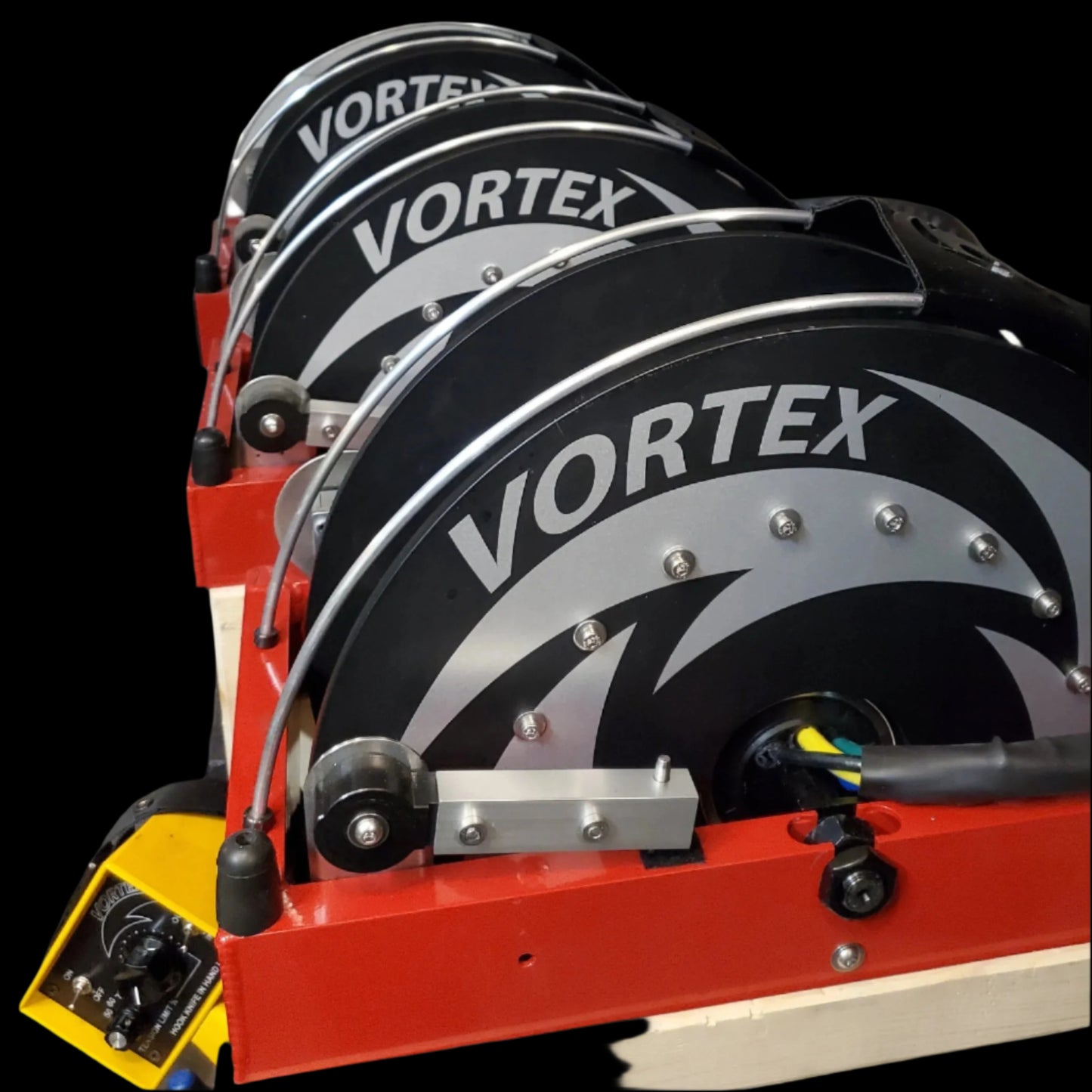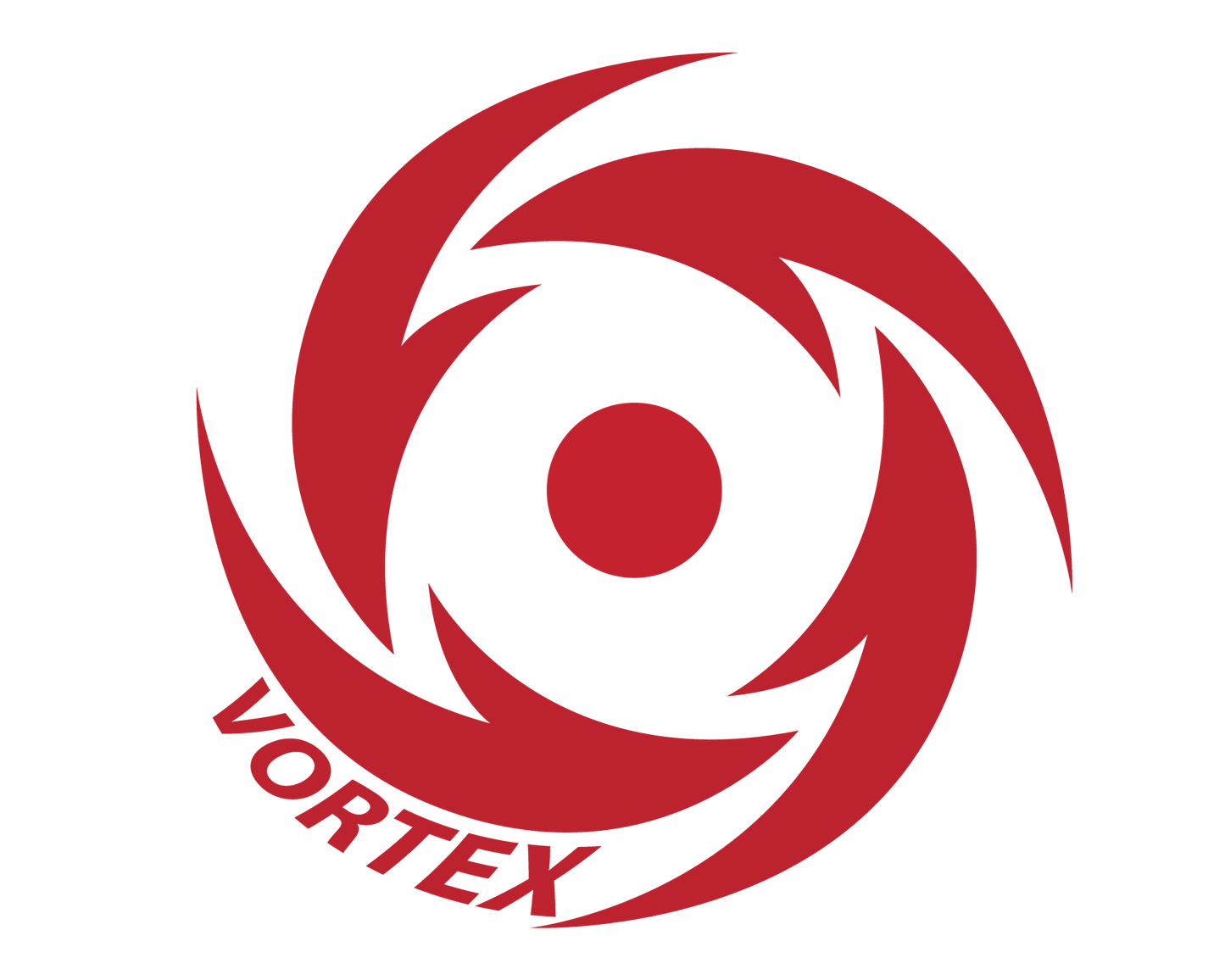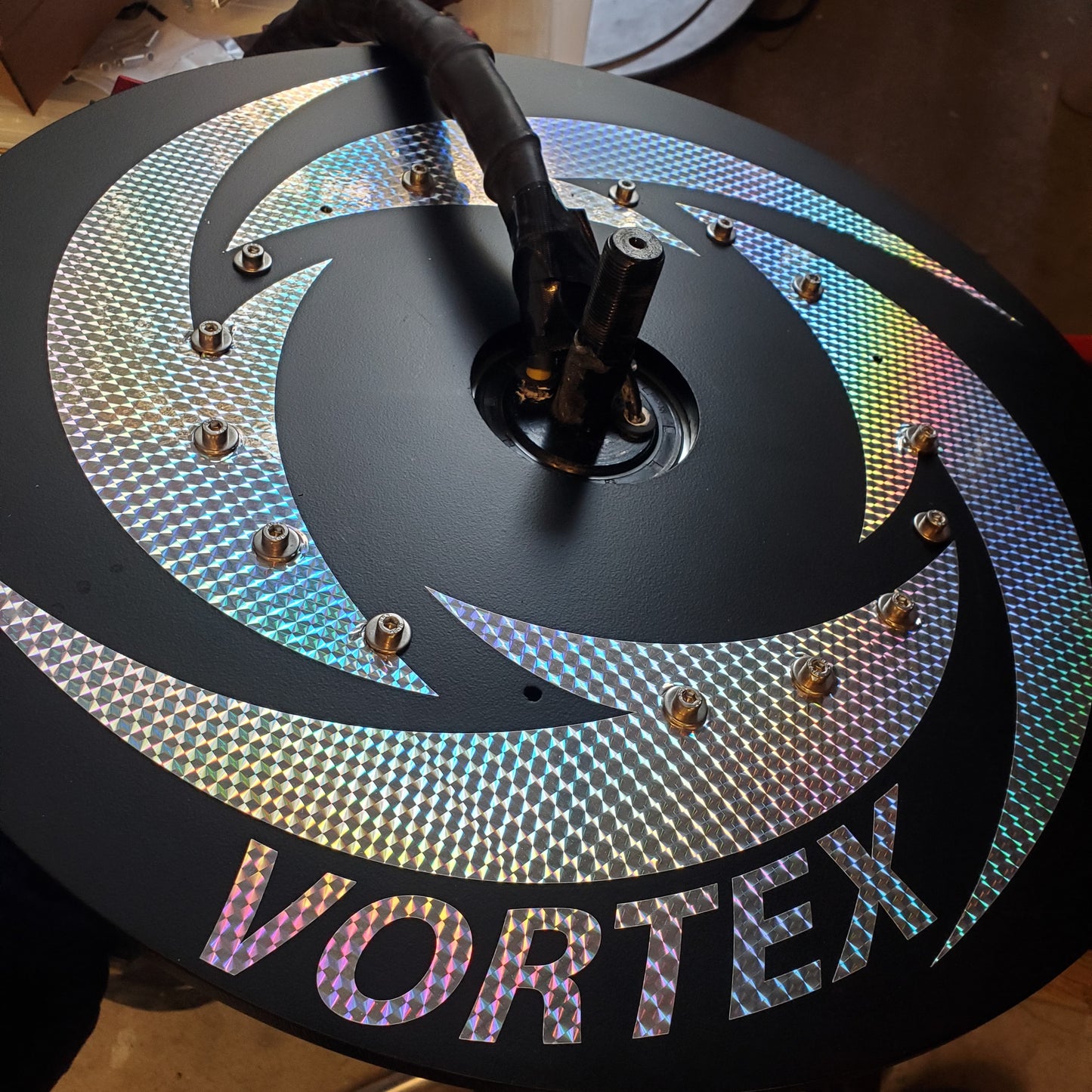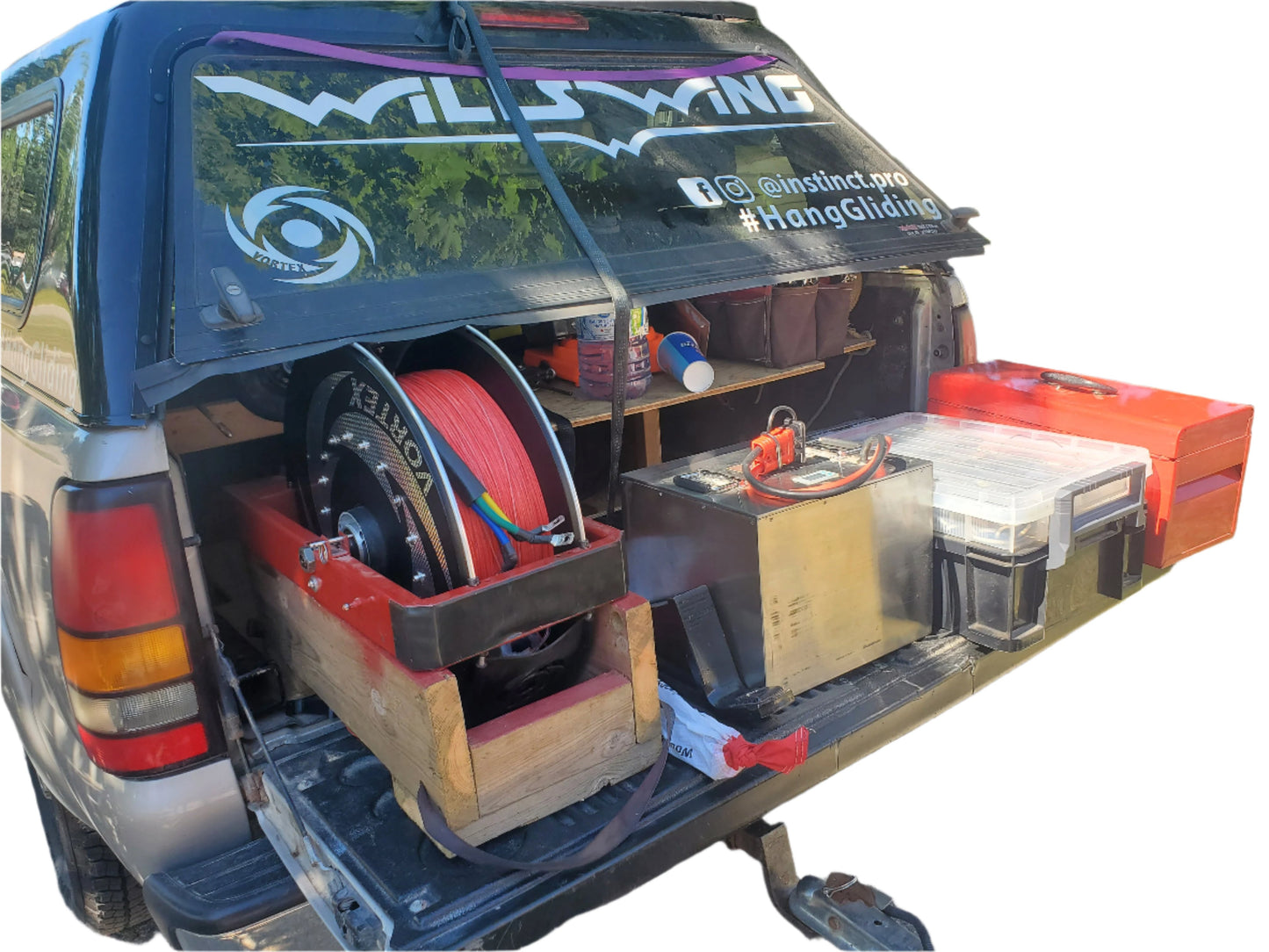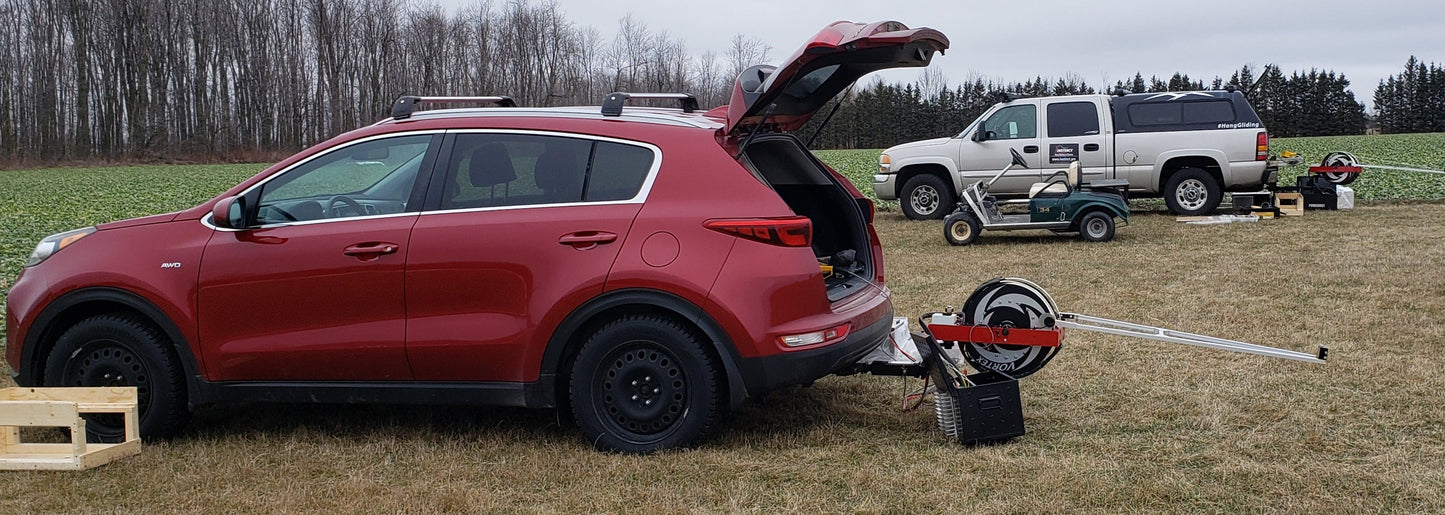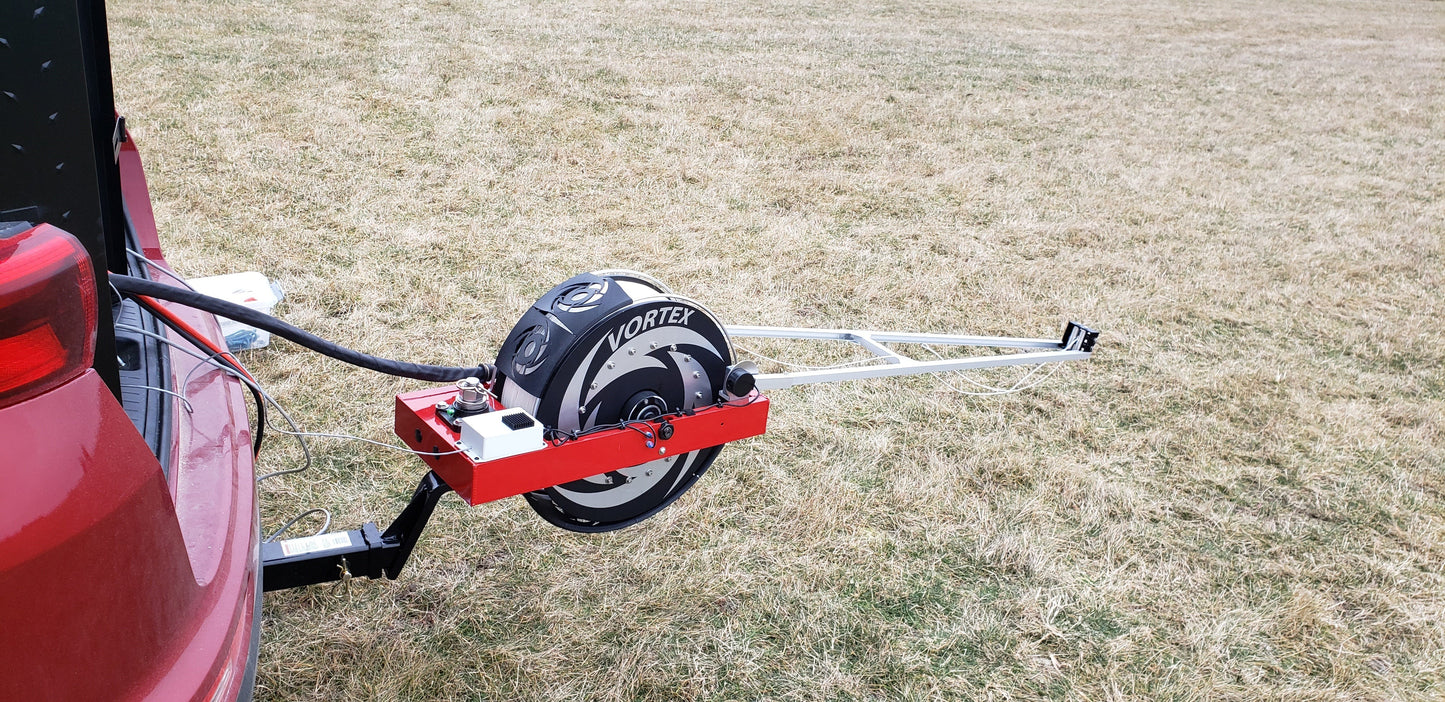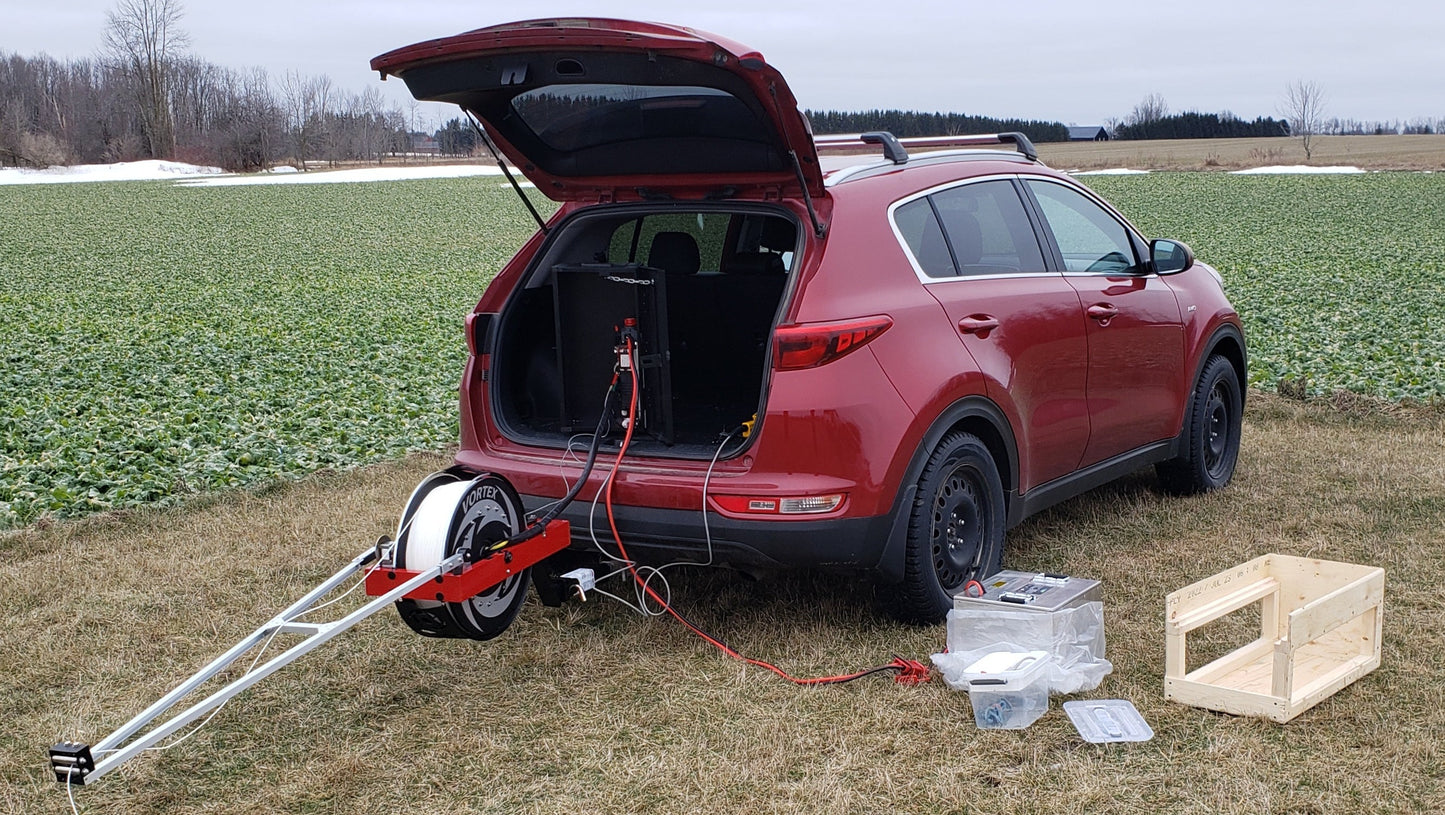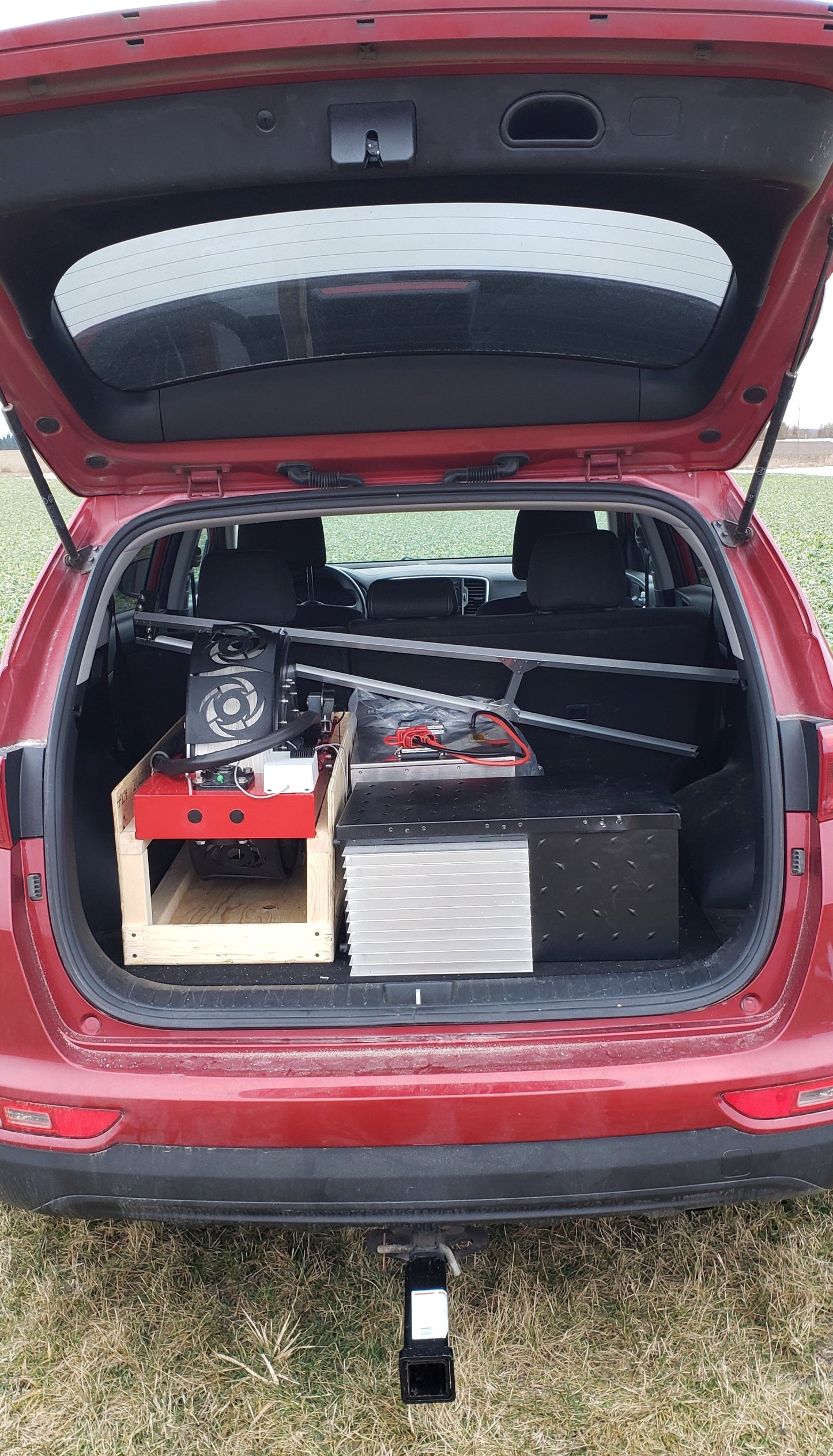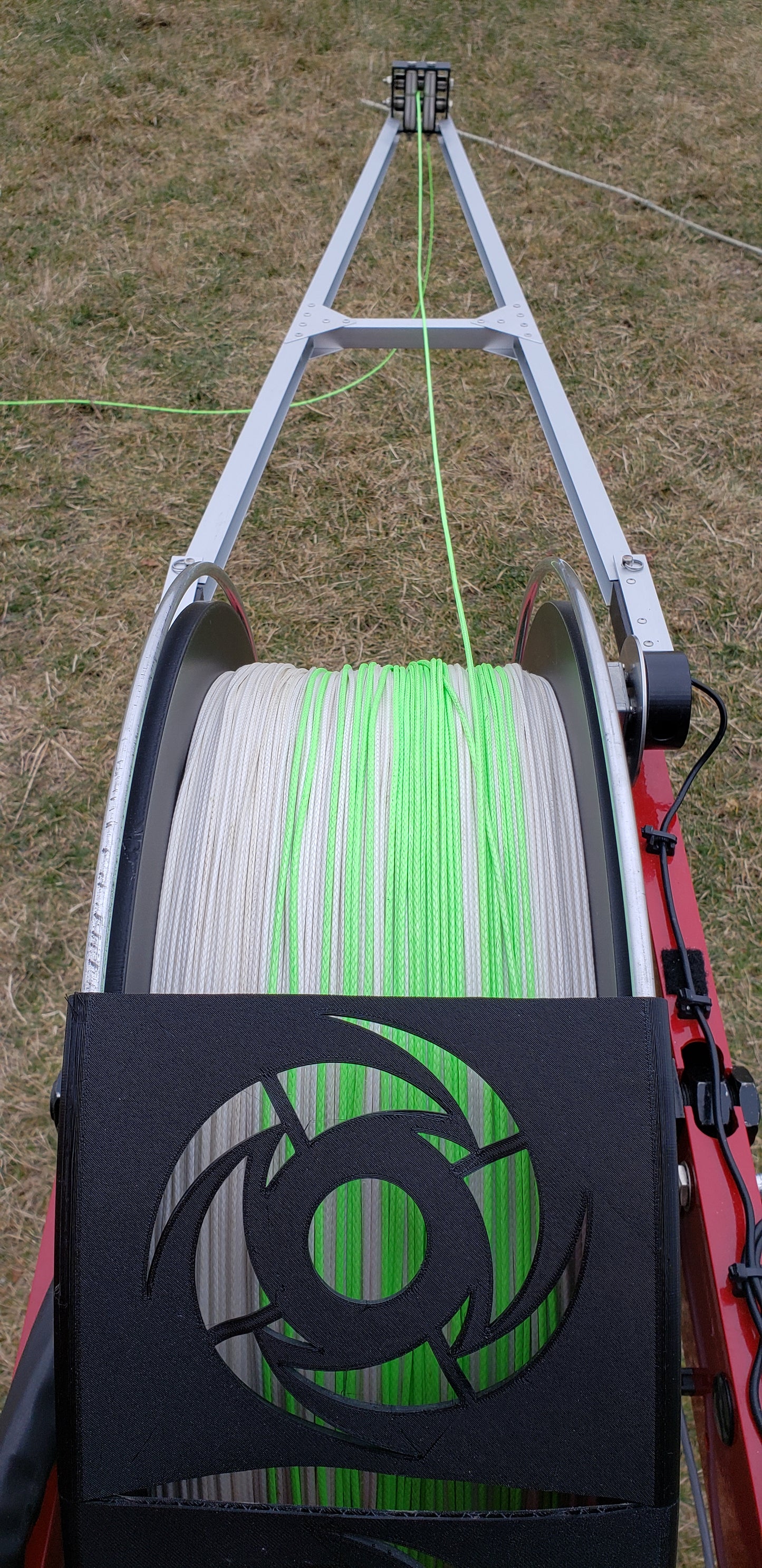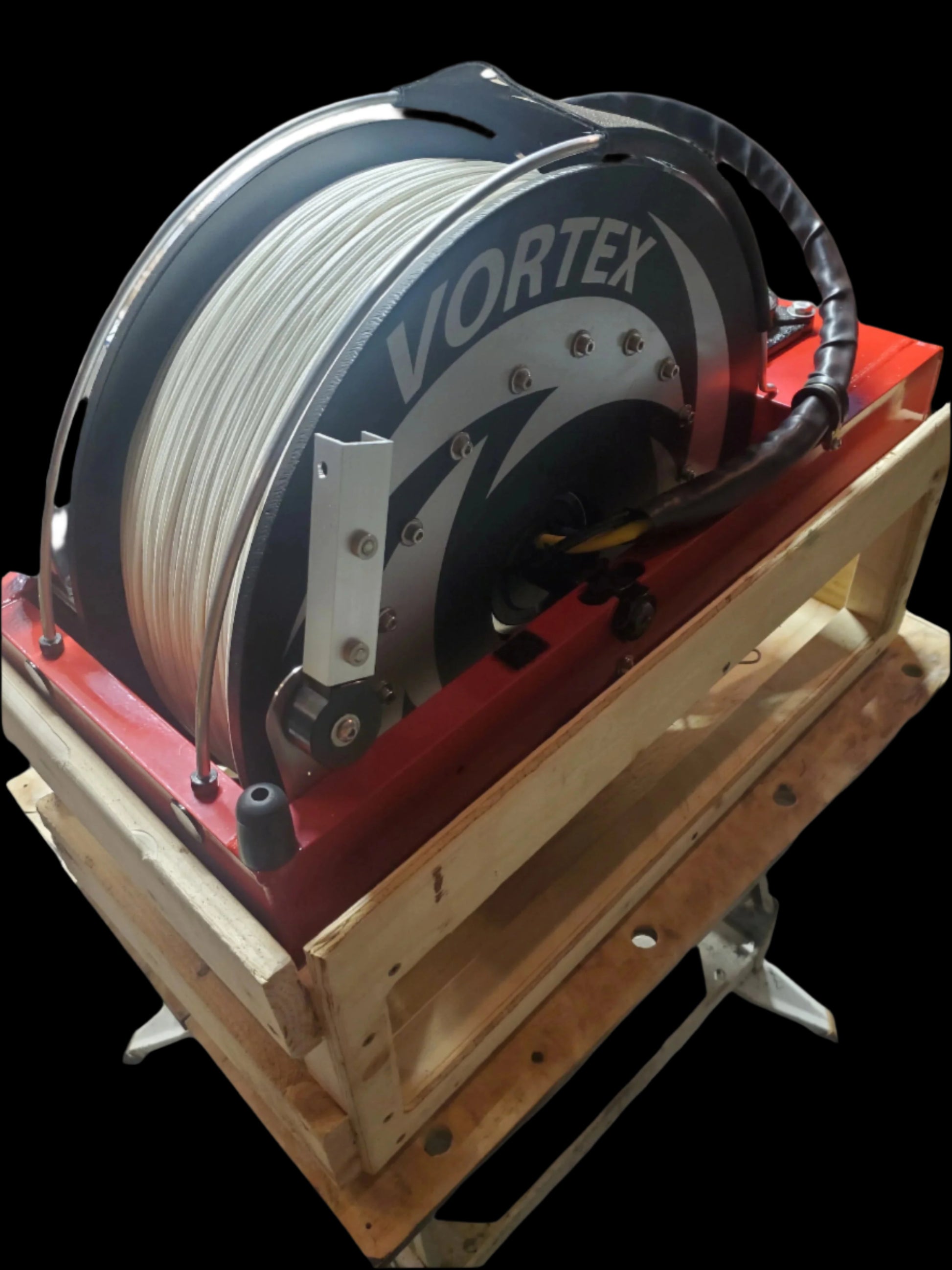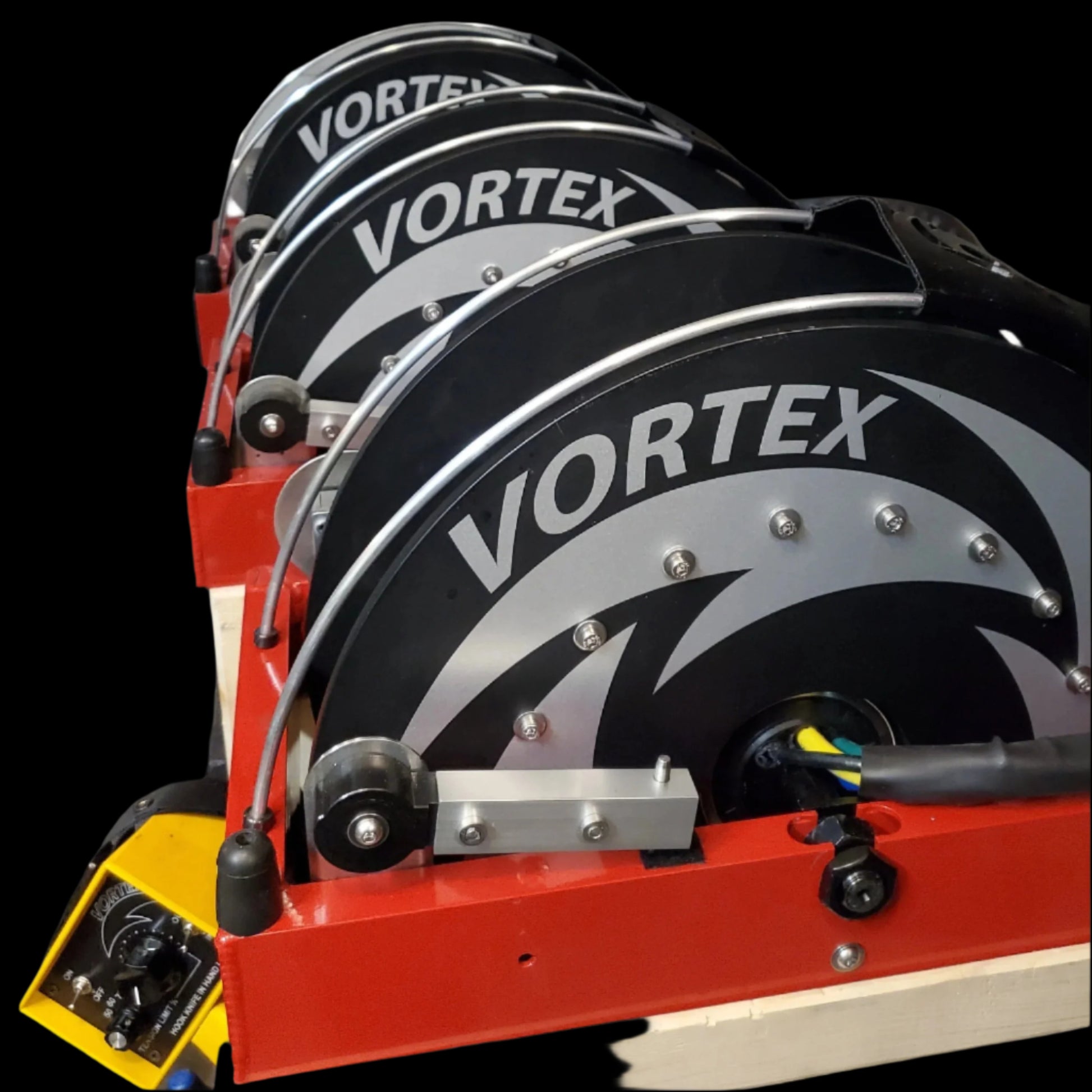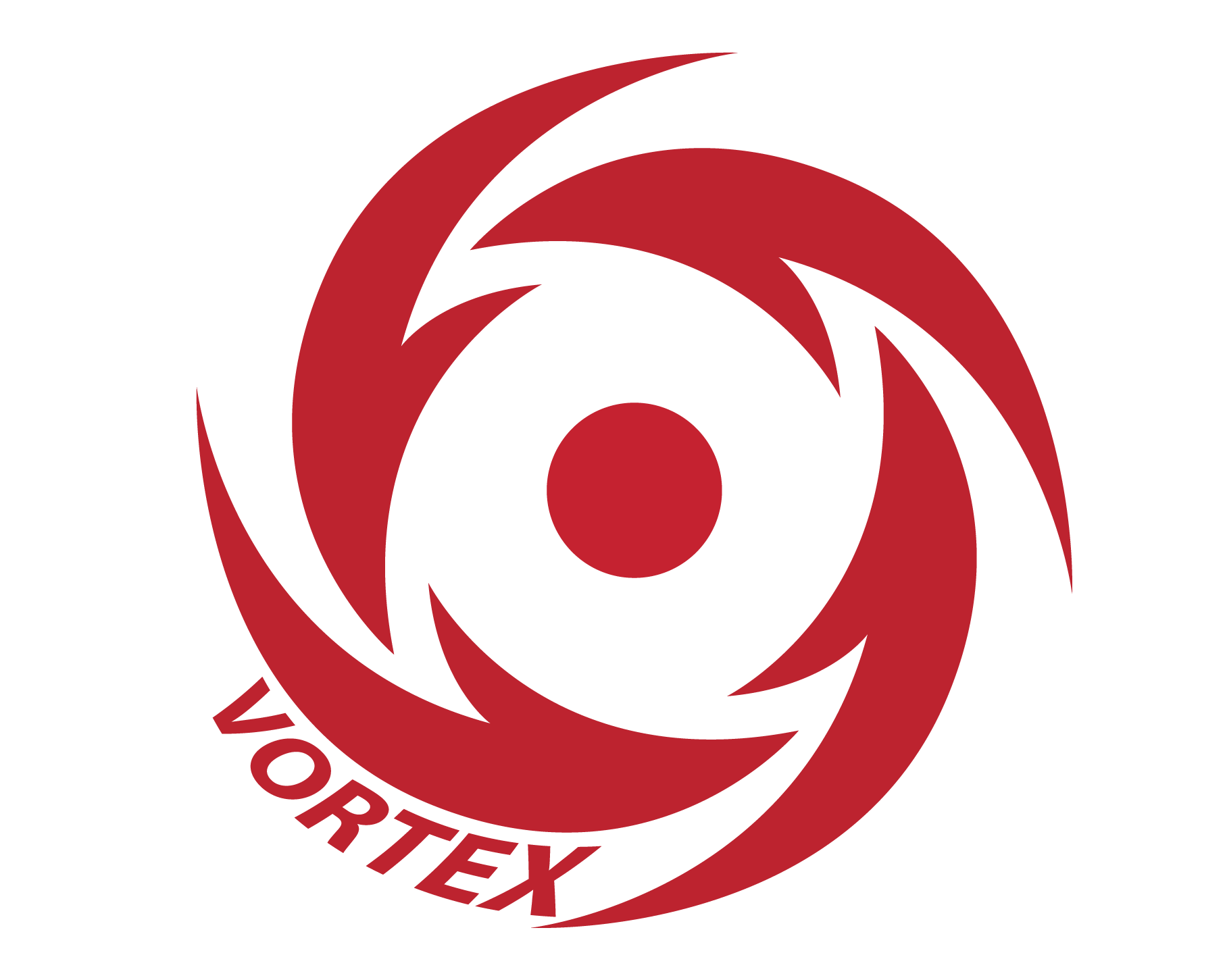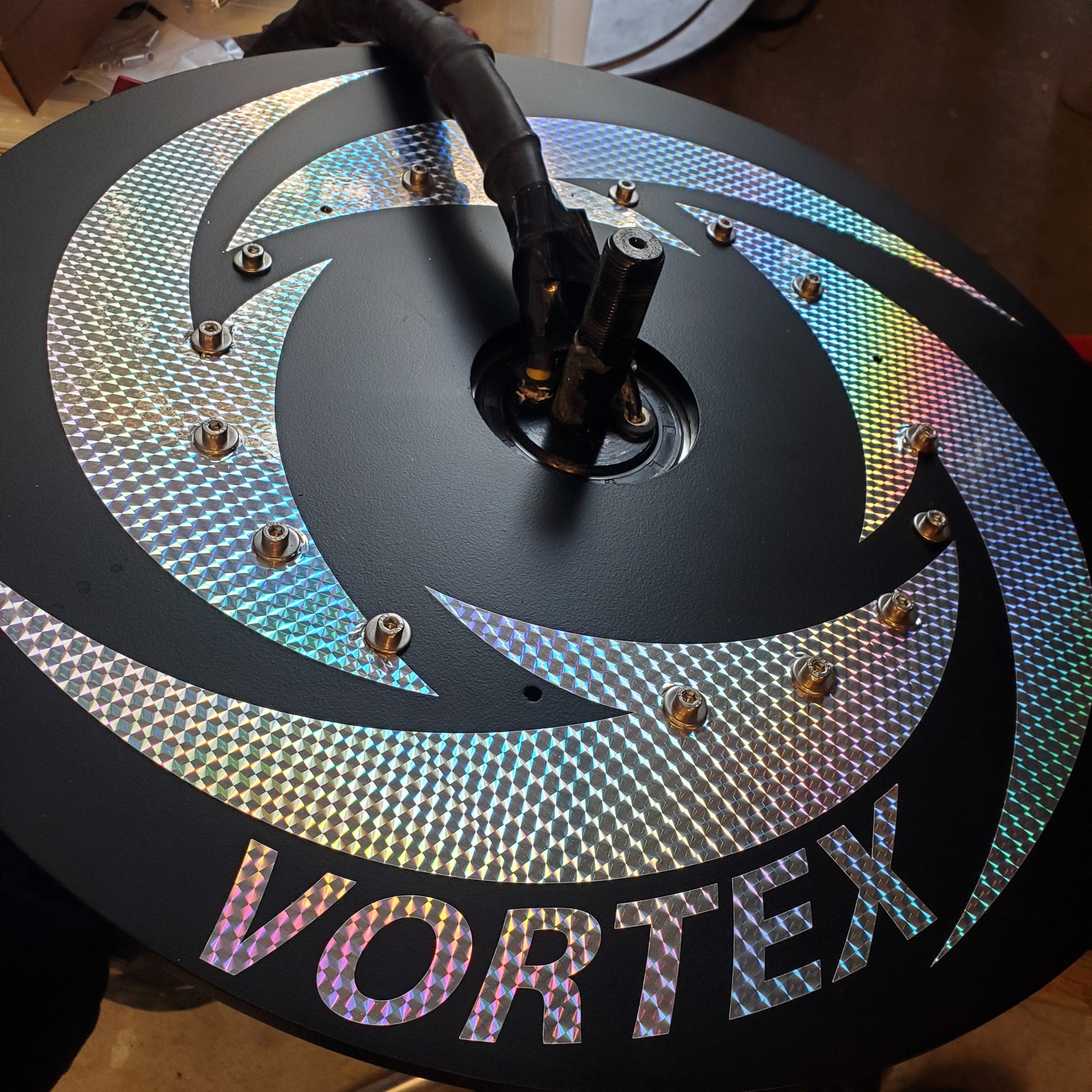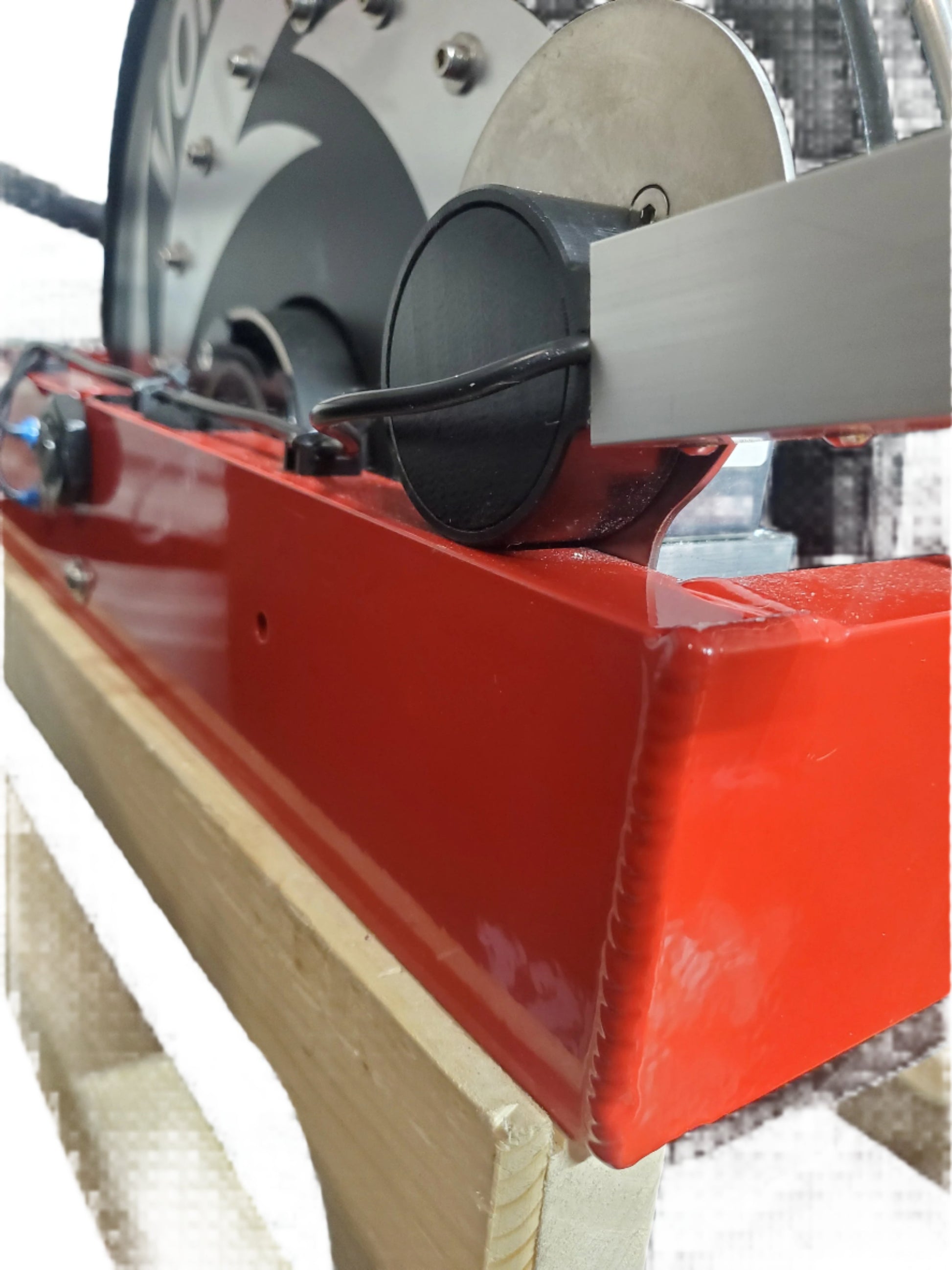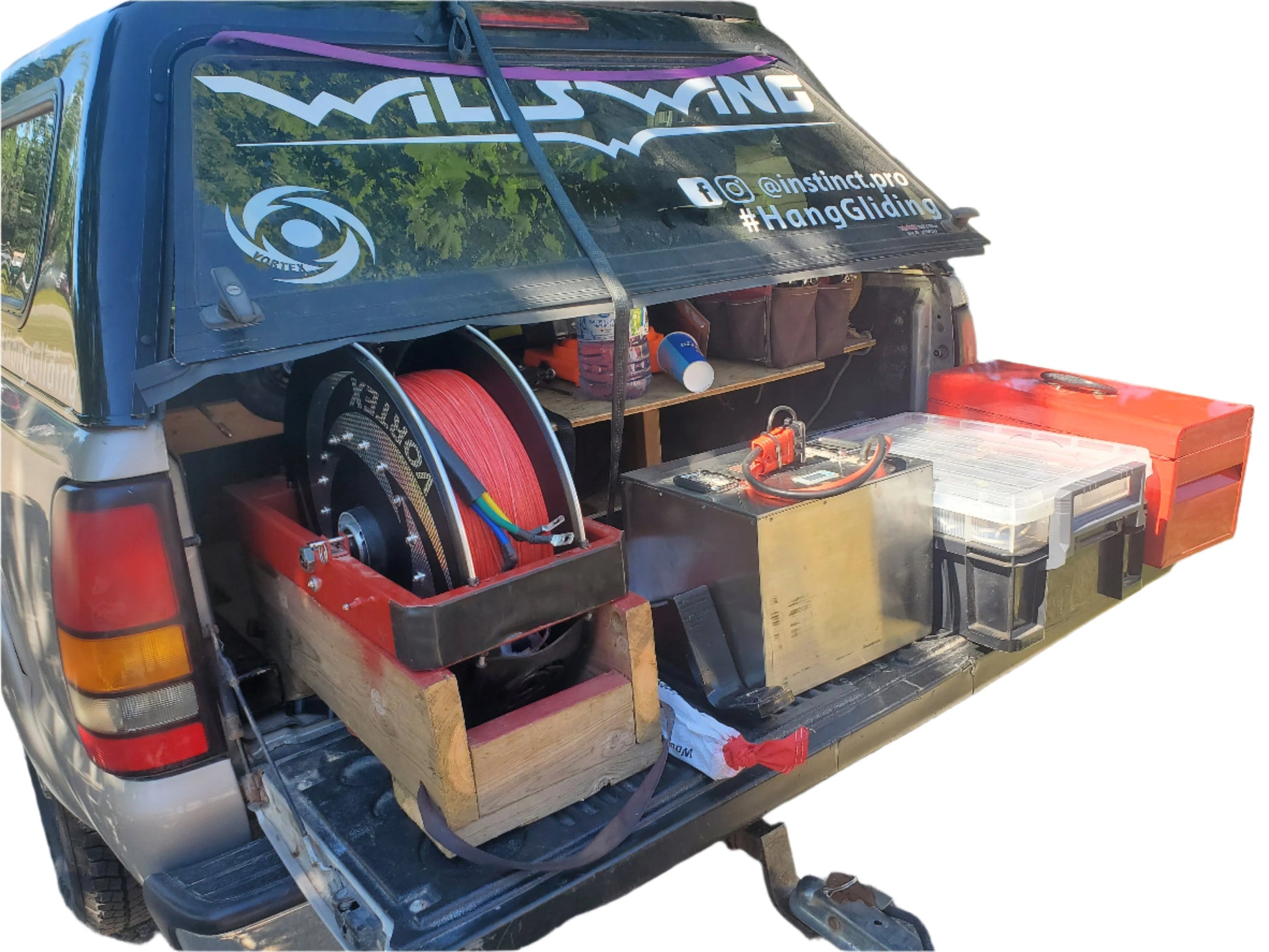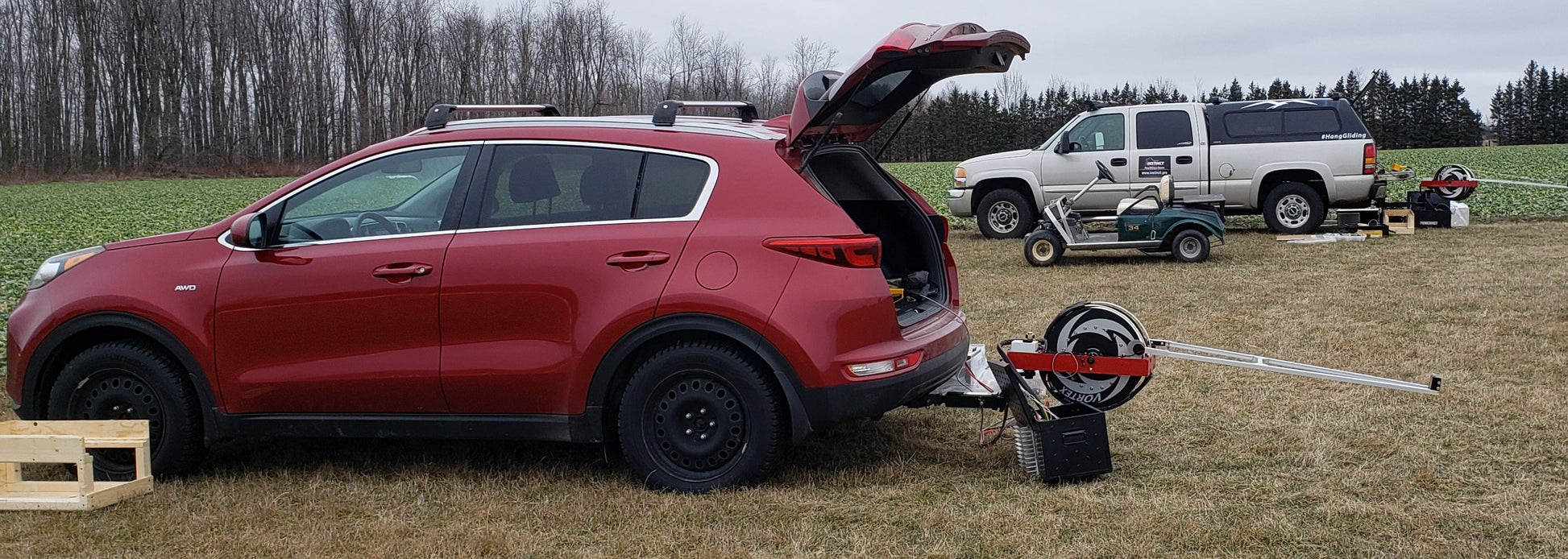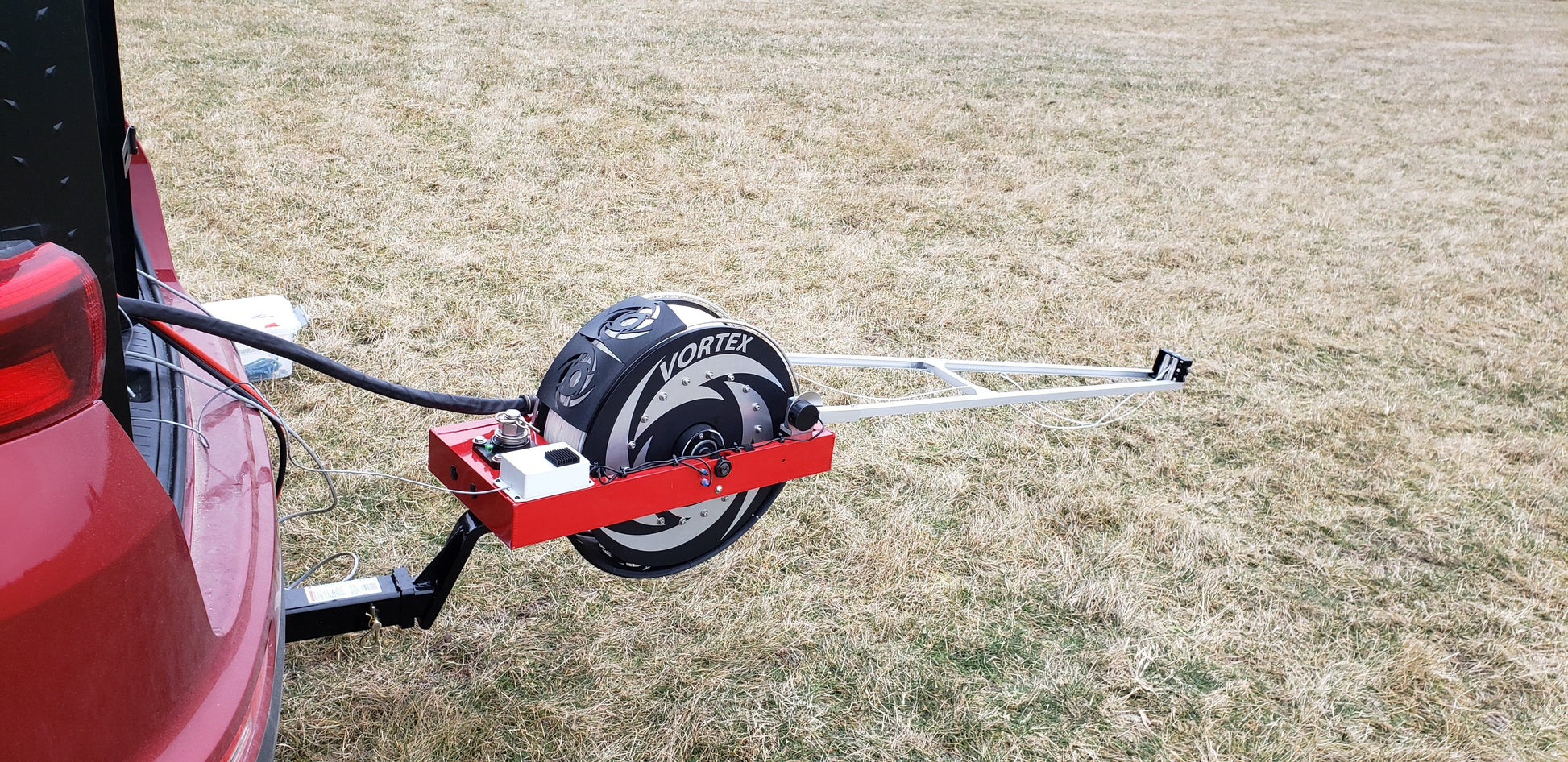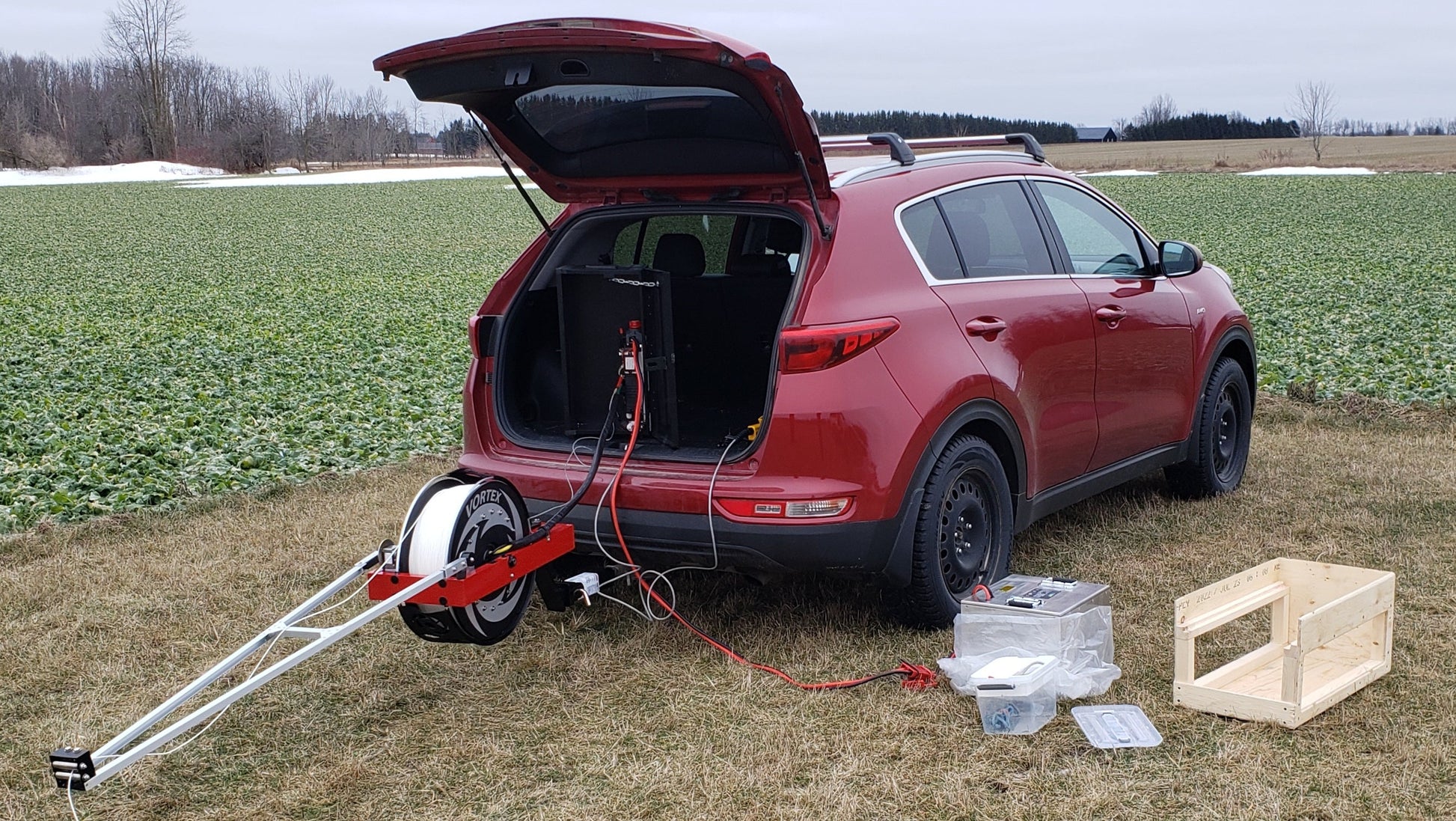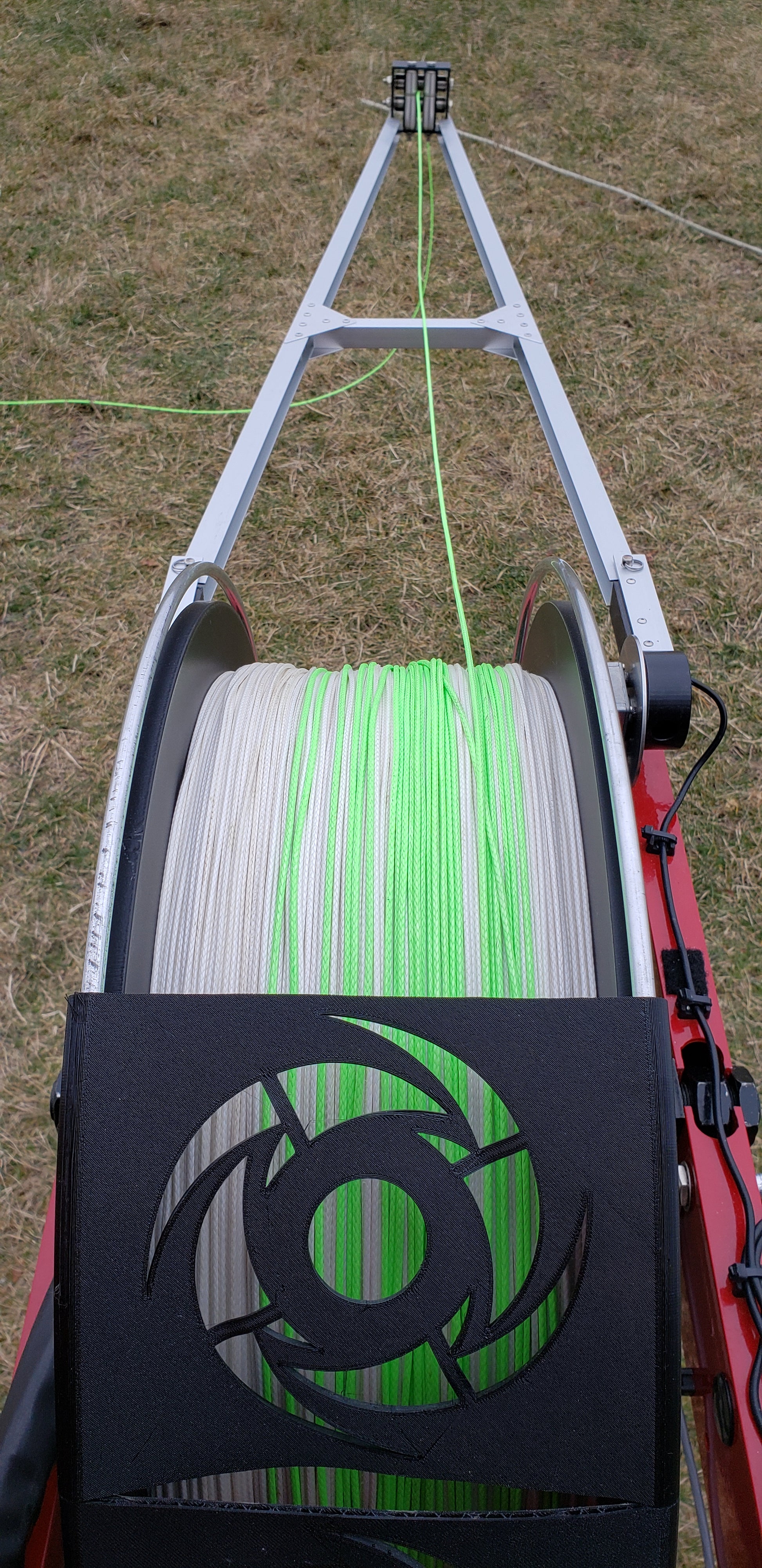Instinct Windsports
Le treuil intelligent Vortex
Le treuil intelligent Vortex
Stock bas : 1 restant(s)
Impossible de charger la disponibilité du service de retrait
Un vortex arrive !!! Le nec plus ultra en matière de treuils stationnaires/statiques – et entièrement électriques !
Conçu et fabriqué en interne ici chez Instinct Windsports. La technologie, la puissance du moteur, la puissance de la batterie et le coût se sont finalement réunis pour nous permettre d'intégrer ces technologies afin de vous proposer un treuil simple TRÈS puissant, TRÈS petit et TRÈS rentable qui peut répondre à tous vos besoins en deltaplane (... et en parapente... et en parachutisme).
Qu'est-ce qu'un vortex ?
« On pense que les vortex de Sedona sont des centres tourbillonnants d'énergie propices à la guérison, à la méditation et à l'exploration de soi. Ce sont des endroits où la terre semble particulièrement vivante et pleine d'énergie. De nombreuses personnes se sentent inspirées, rechargées ou élevées après avoir visité un vortex. »
Vortex - une fois que vous aurez lu ce qui précède, je suis sûr que vous conviendrez que c'est un nom approprié pour ce produit !!
Trois modèles dès 2024 !
- Vortex-4 (vx4) - PGers solo, écoles HG basses et lentes (Condor/Alpha uniquement)
- Vortex-11 (vx11) -vx4 + PGing en tandem, écoles PG, HG en solo, écoles HG, treuil = 83 lb avec corde
- Vortex-15 (vx15 Gen3) - vx11 + tandem HG, clubs HG, 105 lb avec corde
Ce qui est inclus :
- moteur avec brides et châssis revêtus de poudre
- contrôleur de moteur approprié dans le boîtier du contrôleur ABS
- contrôleur portatif analogique personnalisé
- guide-câble à quatre rouleaux (vx11 et vx15) ; guide-câble à œillet en acier inoxydable vx4
- cadre moteur en bois simple pour le transport et le stockage
- 1000 m de corde de 2,0 mm (vx11, vx15), 1300 m de corde de 1,6 mm (vx4)
- câble de remorquage lourd à pas lents - " le serpent " (vx11 & vx15)
-
Support d'attelage de 2" pour votre véhicule avec boulon à fixer
Ce qui n'est PAS inclus dans le prix indiqué ici :
- batterie - vous choisissez la capacité souhaitée
- contrôleur portatif numérique automatisé - offre future (printemps 2025 ?)
- guillotine à corde - offre future (printemps 2025 ?)
- kit de télécommande - offre future (été 2025 ?)
- frais de port et caisse d'expédition
- parachute de récupération de ligne - nous ne fabriquons pas encore le nôtre. Nous vous recommandons d'acheter un Parawinch WinchKite (ils sont chers mais valent vraiment le coût car ils évitent l'usure de votre câble de remorquage, maintiennent le câble et le parachute hors des cultures et augmentent votre efficacité)
Veuillez lire attentivement la FAQ ci-dessous, car elle répondra à la plupart de vos questions. Posez une question ci-dessous si vous en avez une, car d'autres personnes ont probablement la même question !
Gliders Tested
Gliders Tested
- Tandem HG
- Topless HG
* skydiving not yet tested
Weight of winch module
Weight of winch module
Amount of Rope Included
Amount of Rope Included
2.0mm/1000m
It is best to only have the amount of rope you use on your winch. Perpetually unused rope will just get continuously compacted under the rope in use.
Controller Type Included
Controller Type Included
- Wired Analog
Fairlead Type
Fairlead Type
- Mechanical Level Wind
Drogue Chute Included?
Drogue Chute Included?
No
We currently don't make them so we can't provide them at time of purchase. We recommend the Parawinch.eu winch kite
Snake Included?
Snake Included?
Yes
Only required if you are step-towing. It weighs the rope down so you don't snag a wingtip
Availability
Availability
- In Production
- 8 weeks
If in production and not in stock, they take about 8 weeks to produce. We recommend reserving yours by paying a deposit.
Questions & Answers
Have a Question?
-
Do I have to pay the entire amount NOW (pre-order)?
No. We understand it is a big purchase and it will take some time for us to finish it up. So we have a Vortex deposit you can pay for pre-orders and the remaining will be due prior to your Vortex order shipping out. It will also give us some time to figure out freight costs to your address.
-
What tow rope should I put on it?
We import great line and it can be purchased here. 2mm is what we use for solo towing and can fit just over 2km of rope on the winch. We use the 2.8mm for tandem towing.
-
Do I have to buy your battery to go with it?
No, but we recommend the one we offer since we have tested it. We custom ordered our batteries straight from the factory. It is important to get sufficient "continuous output" to ensure you can feed the motor with enough power to get the torque (tow tension) you need. For tandem towing and towing in stronger winds, this requirement can be quite demanding.
If you want to shop around for batteries, we can let you know what specs you need for the model you purchase. However, as of summer 2023, we have sourced and tested a new style of battery that is powerful enough to pull HG tandems, smaller and less expensive than our original batteries. And they are small enough we can UPS them directly from our manufactuerer to you in less than a month's time! Way better than the 7 months it took for us to get our original batteries. -
What tow releases can you use with it?
A tough question. We don't recommend using anything execpt for a Koch-style release. The release is pinned to your chest in a single, reliable position at all times....so WHEN an emergency release needs to be done, the pilot knows EXACTLY where it is and quick reliable slap of the release gets you off the line.
If you are doing step-towing, you are a fool if you try it without a Koch-style release. They are hard to find as no one currently makes them - we will hopefully be making some in the near future.
For straight-pulls, I'd still recommend using a Koch-style release for the above mentioned reasons but I have seen people use releases commonly used for payout winch towing and even aero-tow releases. I can't recommend them for stationary winch towing as we don't allow them to be used at our stationary winch towing facility (we use them all the time at our aerotowing park) -
Can you foot launch with it? cart launch?
You can do either.
We only do and allow foot launching. It takes up less runway space and allows the pilot to manage any crosswind prior to launching and can manage their angle-of-attack easier before launching.
For those pilots that have never done foot-launch winch-towing....start slow on a single-surface glider as you will appreciate how foregiving they can be on adjusting for any mis-management of your AoA upon launch. We would recommend doing 20+ tows on a single surface glider before trying it on any double-surface and especially topless gliders. It's a whole new experience! ...and it is critical that you get it right since you are close to the ground and are dealing with more tow tensions than any other form of towing. -
Why is it better than hydraulic winches? scooter winches? payout winches?
THIS is key. The Vortex is a TENSION-CONTROLLED winch. This is opposed to a SPEED-CONTROLLED (or throttle-controlled) winch.
A speed controlled winch puts a great amount of responsability on the winch-operator. If they only have speed control, they have some work to do to manage the tension on the tow line throughout the tow.Some hydraulic winch are smoother but hydro-static winches still require the winch operator to visibly monitor a pressure gage and adjust their hydraulic flow to attain and maintain a desired tow tension. And the tension can and will change throughout the tow due to glider speed changes, lift/sink, wind gusts and thermals. With a TENSION-CONTROLLED winch, the intelligence of the winch takes care of all that....resulting in a much smoother tow and WAY more efficient with increased safety.
Scooter winches are notorious for rough tows. All you have is a gas throttle to adjust and most scooter-winches don't have a pressure gage to monitor. This requires and even more skilled winch operator and often a very rough ride. For this reason, scooter winches are usually only used in low, smooth winds for rather low-tension training tows.
There are also winches based on the LSD (Limited Slip Differential) transmission of a car. These are stricktly gas throttle controlled as well and have the same problems as a scooter. They do have the added feature of setting a max tension that the transmission will slip if that max tension is attained to limit the tow from going over the max tension. This adjustment is very hard to set and calibrate as you have to test manually with a gage and is often set way too high. -
Can schools use it as a scooter-winch with brand new pilots?
Absolutely! This was a high-priority plan for us since we are an active school. I find scooter-towing first-day students the most stressful due to the Honda Elite 250 scooter that we used use really had TOO MUCH power for first-day students. Plus the fact that it is throttle-controlled-tension makes it an art to operate.
With the Vortex, the tension control is done automatically by the winch brains. We normally only tow early-students in very calm winds anyways but the torque-regulation of the Vortex will help keep constant tension in these very sensitive, low-to-the-ground tows. It even does a bit of compensating for when the students adjust their flying speeds (which we ask them not to do) as if they speed up, line tension would drop and if they push out, line tension would go up....if the winch (or operator) doesn't adjust for it.
For low-and-slow towing (ground skimming) with first-day students, the winch operator has to simply bring enough tension up to take the slack out of the rope and a touch more so the pilot has to resist slightly. When the pilot is ready, all they have to do is start to walk and then jog as if they were ground handling the glider on flat ground. Just by them reducing resistance, it is enough for the Vortex to slowly pick them off the ground (if the pilot is managing the glider properly) and they climb at about 20'/minute! All with the operator doing NOTHING to the tension dial during tow.
In our custom controller we are working on (winter 2023/24) we will have some presets - one will be for a low-and-slow tow, what the scooter towing was invented for.
Some schools have multiple winches (50cc, 80cc, 150cc and 250cc) to have different to have different max-power options so they can't over tension a student. With the tension/torque-regulated Vortex, the one winch will do it all! -
Can it tow Rigid Wings?
As of Sept 2023, it has NOT been tested on rigid wings. As per our research, the speed of our motor should be ample to tow rigid wings....the line tension may be a little light but still enough to get a reasonable tow, just not "optimal".
Stay tuned... -
Can it tow tandem hang gliders?
As of July 2023, we have done a number of tandems and were getting 8-900fpm climbs! We were getting 900' tows off of a 700m/2200' runway.
We ordered the custom motor to handle the line speeds and tensions needed to do tandems. If it does work as expected, owning a Vortex for all tandem pilots should be a no-brainer as it will pay for itself in no time....especially when we get the remote-control configured. Imagine self-towing tandems...no crew NEEDED (we still plan on using a crew member to help with line retreivals, paperwork and safety checks).
-
Can it tow Paragliders?
Absolutely. No problem. The winch has more than enough power.
A key feature of our Vortex electric winch is that it is "tension controlled" - the tension set is automatically moderated in-flight by our controller. If thermals or wind gusts are experienced during tow, the winch quickly adjusts its speed to maintain the desired line tension.
This is a HUGE detterant to most stationary-winch-towing of paragliders as most winches are "throttle-controlled" and if the winch operator over-tensions a paraglider, it could stall on tow and fall backwards with no time to recover. ALL stationary-winch towing carries the risk of the glider (HG or PG) being towed at a very high angle-of-attack and if the tow tension is lost at a low altitude, it can put the pilot at risk while it recovers. This "tension-control" of the Vortex helps minimize this risk (but can never eliminate it).
The only issue with the Vortex towing paragliders now is that it has WAYY TOO MUCH power for paragliders. Our control system right now allows you to set the max tension available to tow PRIOR to launching....and then you can control up to 100% of that setting during the tow on our current manual controller. So it really is no problem if you set it properly for towing just paragliders - set it and forget it. We can pre-configre the winch for you prior to shipping. But if you are switching back and forth between HGs and PGs, you need to be careful as to what the max-tension is set to.
Our Phase 2 controller allows you to change this max-tension setting a lot easier and be visually available on the manual controller. This custom analog controller now ships standard with the Standard Vortex.
Other electric winches boast that their max-tension is limited by which model you purchase from them - the motor is just not powerful enough to over-tension the pilot. This is OK for the pure solo, self-towing solo PG pilot but for any group or club or business that wants to also tow tandem PGs or even HGs and PGs, this one low-powered winch is not suitable. We are more of the mindset to have ONE winch that can do it all for all pilots and work together with PGs and HGs, schools and certified pilots and solo or tandem pilots. It is much more of an easier investment for a group/club like this. -
How high can you tow with it?
We find that if you use the proper tensions (not to high, not to low), you should be able to get between one-third to one half of the launch distance up...so if you have 1000m of line out at launch, you can get at least 1000' high.
There are a lot of factors such as pilot weight, skill level, stationary winch tow experience and of course the flying factors like wind speed, lift or sink (none of either is more reliable) and even humidity plays a factor.
The real art for us is finding the ideal tow pressure - we have seen many operators tow too hard....they think the harder you pull, the higher you get. The big problem is pulling too hard puts the pilot in danger if they lose the tow line (breakage, premature release or weaklink break), especially close to the ground. Years ago, since we use a tension-controlled hydraulic winch, we were able to monitor the pressures and we ended up reducing our tow pressures by about 40% and ended up getting higher altitude tows as we spent more TIME climbing compared to pulling in the rope faster with the higher pressures. Sure the climb rates were higher, but the pull was over MUCH faster.
In fall of 2022, we step-towed to just under 4000' off of a 2200' airstrip with the Vortex. Step-towing is an art that shouldn't be tried unless you are super-experienced. -
Can it Step Tow?
Yes, it "CAN".
We have already tested it for step-towing and it was a success. I personally two-step step-towed to 500m in light winds with launching with only 500m of line out. I have also towed up to well over 3000' (on solo HGs as well as a tandem) step-towing with it as well.
However, step-towing has A LOT of risks and shouldn't be attempted without proper training and starting very conservatively. Our students often step-tow before even earning their H2 rating so pilots of all levels CAN step-tow successfully but if you have never towed behind a stationary winch, you owe it to yourself to learn to do that first on a single-surface glider before attempting step-towing. We would recommend doing 20 full-tension "straight tows" (non-step-towing) before considering step-towing.
Our Phase 2 custom analog controller (that is now standard with a Vortex) makes it a lot easier to step-tow. NEVER step-tow without a weighted line on the end of your tow line (we call it the Snake). Our Phase 3 digital controller will further improve all functionality, including step-towing. We also stopped step-towing with our original level-wind system - it wasn't reliable enough. As of fall-2024, we have implemented a mechanical level-wind system on the vx15 and vx11 to make step-towing much more reliable.
The Vortex will never be certified to step-tow as it widely unaccepted as a suitable form of towing world/industry-wide. We have step-towed THOUSANDS of times here at Instinct. It is a very common practice around here in Ontario, Canada and the other schools have done it WAY more than we have. It is also VERY popular in the Nordic countries as well...but it also has a LOT of extra risk that the pilot needs to realize and assume full responsibility for what happens up there.
I consider it the best kept secret in hang gliding....but also the most risky form of towing. Be cautious and NEVER attempt it without a Koch-style release. We can't stress this enough...step-tow at your own risk. -
What makes it Smart?
In a nutshell, it is TENSION controlled.
Our motor controller can "automatically" adjust the motor's rpm/speed to attain a constant line tension. I put "automatically" in quotes as there is a slight delay....FRACTIONS of a second! (more with the more rope you have out). WAY faster than any human winch operator could react to.
MOST other stationary winches out there are all SPEED (aka throttle) controlled...the winch operator has to visually monitor a tension guage and adjust their controlls to attempt to keep a constant line tension to give the pilot a smooth tow. This is the case for all scooter-winches, Limited-Slip-Differential winches, many other electric winches and even most hydra-static (hydraulic winches).
When we started Instinct in 2009, we invested in a hydraulic winch that has a pressure-relief valve the dumps the hydraulic fluid should the set desired tension gets exceeded during the tow (thermal or gust). It has rewarded us with incredibly smooth tows in VERY thermic inland conditions - we always THOUGHT they were smooth though - but nothing compared to the tows on the Vortex. Something our local competitors don't have.
It is great to see this technology finally exists now - we have found the proper combination of our custom electric motors that are powerful enough for tandems and coupled with custom programmed motor controller to offer tension control. You won't believe how smooth the tows are on this Vortex.
The Vortex's tension control reacts SO quick and smoothly...while being winch operator I have seen the motor visually studder four or five times while a pilot 1km away (3300') run out their launch. I asked the pilot later about their launch and they didn't notice anything and said their launch was the smoothest ever..this was just the Vortex auto-adjusting for contstant tension in sync with the pilots strides at launch!
AND THEN - since the entire system is electronic, it opens up the reality of being able to automate the winch operating process to make it easier to get more winch operators on-board....and the next step (by spring 2024) is to add remote-control to the system allowing the pilot to tow themself!
Just imagine... -
Can it be used as a payOUT winch?
It "can"....but I question why...
It is designed as a pull-IN winch and has the power to get high tows using a short field (min 500m). However we have experienced it in payout mode as we towed in strong winds (20kmh) and up higher it was at least 35km. The winch started to payout and the pilot never knew the difference. The Vortex did it all on it's own as it's focus is to provide automatic constant line tension.
We feel it is a very expensive payout winch. There are a lot less expensive, reputable hydraulic-based payout winches that are much simplier than electronic winches that rely on electronics and possibly more programming to automate.
We also are aware there are a few paragliding electric winches that are being used as payout winches successfully as well. I ask why of them as well and they said because the electric winches provide the smoothest tows on the market, whether that is pull-in or pay-out. And the automation makes winch operating much easier than a classic mechanical winch.
How electric winches usually do paying OUT is they use the regenerative braking that is standard in the motor and use the digital brake to set a certain payout line tension...the computer does the rest! The result - little for operator to do, super smooth tow but the by-product is energy...and that has to go somewhere...either store that energy or A LOT of heat!
What we hear is happening with the PGers that are paying out is that they are starting their day with a battery that is at it's minimal storage and then the regenerative braking while towing is filling up their battery. However, this is happening TOO fast. So they are running a lot of halogen lights off of their tow vehicle to burn off that energy all day while they are towing as if they fill up their battery, they can't continue to tow as it will over heat the entire system and you risk frying your electronics.
To me, it doesn't make sense to waste this power by running lights....and in the meanwhile, you are burning gas on your tow vehicle all day long. Ideally it'd be nice if you had an electric vehicle that could output enough power to run your winch AND take in that energy from the winch's regenerative braking. I could see that happening in the future but no EV manufacturer is going to alllow you under warranty to charge their battery that way...
Our potential solution..."HYBRID" towing. The other advantage of pay OUT towing is that you start off with no or only a couple hundred feet of tow line out when you launch. You can then payout for as long as your tow road is, flip it into pull IN mode to top off the tow. This would possibly produce some energy while payout out and then use up that power during the pull-in portion.
This is something we feel the Vortex will be able to do once we get our fully digital controller working (fall 2023?) which will allow us to do some fancy programming like this. And all existing Vortexes will be able to take advantage fof these future upgrades. There will be upgrade fees for the digital controller and possibly programming updates for added features. -
I cannot lift 92 lbs (old HG injury). Can the winch be partially disassembled so not single part is more than 50 lbs?
No, sorry. The electric motor itself is about 45lbs...plus the flanges and metal frame. It does come with a wooden carrier that has handles on both sides. We normally lift it on and off the vehicle with two people as it is heavy for anyone (and is an awkward size to lift solo).
Share

